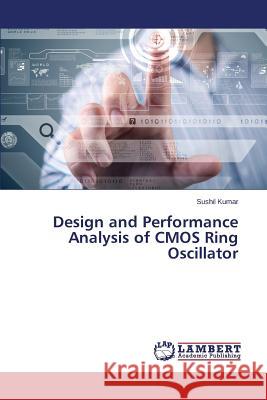Design and Performance Analysis of CMOS Ring Oscillator » książka
Design and Performance Analysis of CMOS Ring Oscillator
ISBN-13: 9783659551574 / Angielski / Miękka / 2014 / 116 str.
In the tremendous growth of wireless handheld devices, low power consumption becomes a major consideration in radio frequency integrated circuit (RFIC) designs. This book introduces a multistage voltage controlled ring oscillator. The proposed structure uses 45 nm CMOS Technology in cadence. PSS analyses are performed in order to determine the frequency of oscillation and the influence of parameters such as supply voltage, temperature or load capacitance over the oscillation frequency. A transient analysis is performed to illustrate the effects of the parasitic parameters over the oscillation frequency. Ring oscillators with different number of stages like 7, 9 and 11 were designed successfully and their performance parameters are discussed in great detail and compared to reach to solutions to the challenges faced by the current Ring Oscillator technology. The challenges are phase noise, frequency jitter, period jitter, delay, jitter, total harmonic distortion (THD), transfer function etc. and are dealt appropriately in the system designs proposed for different number of stages. For example, a certain signal may have a phase noise of -80 dBc/Hz at an offset of 10 KHz.
In the tremendous growth of wireless handheld devices, low power consumption becomes a major consideration in radio frequency integrated circuit (RFIC) designs. This book introduces a multistage voltage controlled ring oscillator. The proposed structure uses 45 nm CMOS Technology in cadence. PSS analyses are performed in order to determine the frequency of oscillation and the influence of parameters such as supply voltage, temperature or load capacitance over the oscillation frequency. A transient analysis is performed to illustrate the effects of the parasitic parameters over the oscillation frequency. Ring oscillators with different number of stages like 7, 9 and 11 were designed successfully and their performance parameters are discussed in great detail and compared to reach to solutions to the challenges faced by the current Ring Oscillator technology. The challenges are phase noise, frequency jitter, period jitter, delay, jitter, total harmonic distortion (THD), transfer function etc. and are dealt appropriately in the system designs proposed for different number of stages. For example, a certain signal may have a phase noise of -80 dBc/Hz at an offset of 10 KHz.











